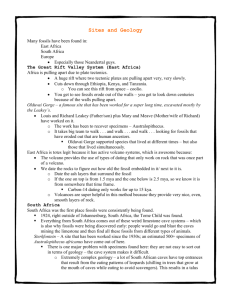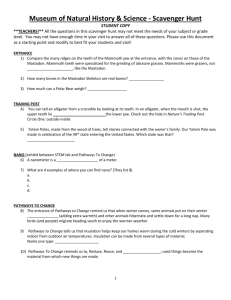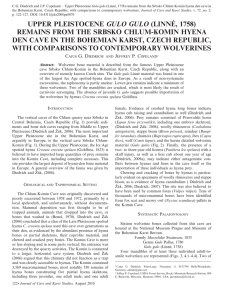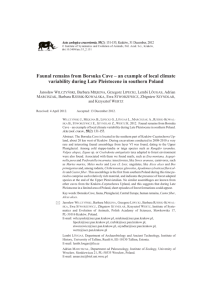Media Release
advertisement
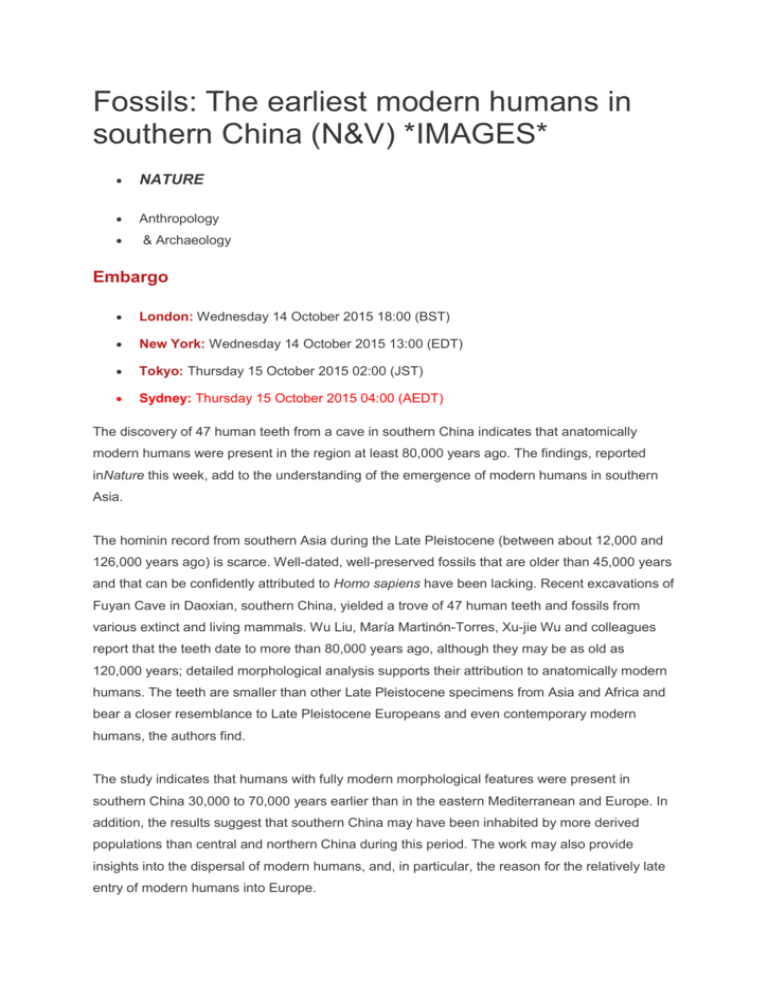
Fossils: The earliest modern humans in southern China (N&V) *IMAGES* NATURE Anthropology & Archaeology Embargo London: Wednesday 14 October 2015 18:00 (BST) New York: Wednesday 14 October 2015 13:00 (EDT) Tokyo: Thursday 15 October 2015 02:00 (JST) Sydney: Thursday 15 October 2015 04:00 (AEDT) The discovery of 47 human teeth from a cave in southern China indicates that anatomically modern humans were present in the region at least 80,000 years ago. The findings, reported inNature this week, add to the understanding of the emergence of modern humans in southern Asia. The hominin record from southern Asia during the Late Pleistocene (between about 12,000 and 126,000 years ago) is scarce. Well-dated, well-preserved fossils that are older than 45,000 years and that can be confidently attributed to Homo sapiens have been lacking. Recent excavations of Fuyan Cave in Daoxian, southern China, yielded a trove of 47 human teeth and fossils from various extinct and living mammals. Wu Liu, María Martinón-Torres, Xu-jie Wu and colleagues report that the teeth date to more than 80,000 years ago, although they may be as old as 120,000 years; detailed morphological analysis supports their attribution to anatomically modern humans. The teeth are smaller than other Late Pleistocene specimens from Asia and Africa and bear a closer resemblance to Late Pleistocene Europeans and even contemporary modern humans, the authors find. The study indicates that humans with fully modern morphological features were present in southern China 30,000 to 70,000 years earlier than in the eastern Mediterranean and Europe. In addition, the results suggest that southern China may have been inhabited by more derived populations than central and northern China during this period. The work may also provide insights into the dispersal of modern humans, and, in particular, the reason for the relatively late entry of modern humans into Europe. Article and author details 1. The earliest unequivocally modern humans in South China Corresponding Authors María Martinón-Torres University College London, London, United Kingdom Email: maria.martinon-torres@ucl.ac.uk, Tel: +44 20 7679 4907 Wu Liu The Institute of Vertebrate Paleontology and Paleoanthropology, Chinese Academy of Sciences, Beijing, China Email: liuwu@ivpp.ac.cn Xiu-jie Wu The Institute of Vertebrate Paleontology and Paleoanthropology, Chinese Academy of Sciences, Beijing, China Email: wuxiujie@ivpp.ac.cn N&V author Robin Dennell University of Exeter, Exeter, UK Email: r.w.dennell@exeter.ac.uk DOI 10.1038/nature15696 Online paper* http://nature.com/articles/doi:10.1038/nature15696 * Please link to the article in online versions of your report (the URL will go live after the embargo ends). Geographical listings of authors China , Netherlands , Spain , United Kingdom & United States Image One Caption: 47 human teeth found from the Fuyan Cave, Daoxian Credit: S. Xing and X-J. Wu Image Two Caption: Geographical location and interior views of the Fuyan Cave, Doaxian with dating sample (lower left), plan view of the excavation area with stratigraphy layer marked (center), the spatial relationship of the excavated regions and researcher finding human tooth (right). Credit: Y-J Cai, X-X Yang, and X-J Wu Image Three Caption: Human upper teeth found from the Fuyan Cave, Daoxian. Credit: S. Xing Image Four Caption: Human lower teeth found from the Fuyan Cave, Daoxian. Credit: S. Xing






